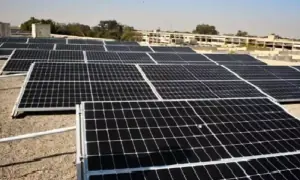How the interest rate hike is going to affect you
Pakistan has increased the interest rate by a massive 300 basis points (bps) – or 3% points – after giving in to the International Monetary Fund (IMF) for a loan.
The measure will make personal loans highly expensive and people will struggle to pay their equated monthly installments (EMIs) amid rising inflation.
On the other hand, pensioners and other people with savings also face a tough choice: To keep their funds in the bank or convert them into fixed assets.
Inflation has already topped 31.5% and will be hitting 33% in a few months, according to Moody’s experts. Hence, bank savings are rapidly losing their real value. Though your bank continues to pay you a good profit, a few months down the line your Rs1 million may not buy what it can purchase you today.
Under these circumstances, should you go to the bank to either take out a loan or deposit your savings to earn profit? That’s the question.
Why and by how much will your personal loan become expensive
Your personal loan is becoming expensive because of the interest rate hike. The interest rate is also called the policy rate.
The interest rate already stood at 17% after the previous announcement by the State Bank of Pakistan (SBP) on January 23.
One-year KIBOR, the rate banks use for lending money to each other, was at 19.82%. This rate is factored in when banks calculate a personal loan they offer you.
KIBOR is determined based on the interest rate, so, the interest rate is important.
When banks offer you a loan, they add their profit on top of KIBOR. So, KIBOR plus bank profit is the interest rate that you pay on the loan.
A bank would roughly charge 10% on a personal loan. So, the bank interest rate on a personal loan was nearly 30% before the State Bank of Pakistan announcement on Thursday. It will now increase by an additional 3% or 300bps.
The central bank announced the policy rate without waiting for the monetary policy committee meeting scheduled for March 16, 2023.
How will that announcement affect you? For example, if you have taken an Rs1 million loan for five years, after the policy rate hike your EMI will increase from Rs32,353 to Rs34,220 at the least.
You need to finance the extra Rs1,867 by cutting some other expenses. Amid rising inflation, it could be an uphill task.
The saver’s dilemma
While most people pay above 30% interest on personal loans, pensioners and other savers receive only about 16% profit on their money.
The profit on various types of saving certificates is between 12.60% and 15.96%. The profit rate for saving accounts is nearly 15%. The rates were raised in January after pensioners and others began rapidly pulling out funds from saving schemes. Earlier, they were paying around 12.5%.
Between July 2022 and December 2022, at least Rs240.21 billion in outflows from the savings schemes were recorded, according to the data issued by the State Bank of Pakistan.
Savers feel worse off depositing their money with banks or the National Savings Schemes (NSS). They are withdrawing their funds to turn them into assets which will see their value increase in rupee terms.
With the inflation rate at 27.6% and profit on savings at only 16%, pensioners see at least 11.6% in the purchasing power of their money erode every year.
The central bank on Thursday confirmed that average inflation will be between 27 and 28 percent for the current fiscal year.
An item that you can buy with Rs1 million now will cost Rs1.276 million next year at the 27.6% inflation rate. Meanwhile, the total profit you earn from the bank in a year is only Rs160,000. Your loss is Rs116,000.
Savers want to avoid this loss.
But drawing money from banks and converting it into assets is not easy, especially for older people. Converting a liquid asset such as cash into a fixed asset such as a piece of land, or vice versa, always involves effort.
Additionally, safekeeping is another challenge. If the asset is a precious metal such as gold, you need to find a bank locker. If it is a piece of land you must make sure no one occupies it illegally.
You either accept the risk and withdraw money from the bank to turn into fixed assets or accept the roughly 11.6% loss.
There are a few other options such as mutual funds, the stock market, or the new initiative under ‘real estate investment schemes’ (REIT), but they all involve some sort of risk.
National savings schemes and saving accounts have been the most secure avenues for pensioners and young savers with limited knowledge of finance.
For the latest news, follow us on Twitter @Aaj_Urdu. We are also on Facebook, Instagram and YouTube.




















Comments are closed on this story.